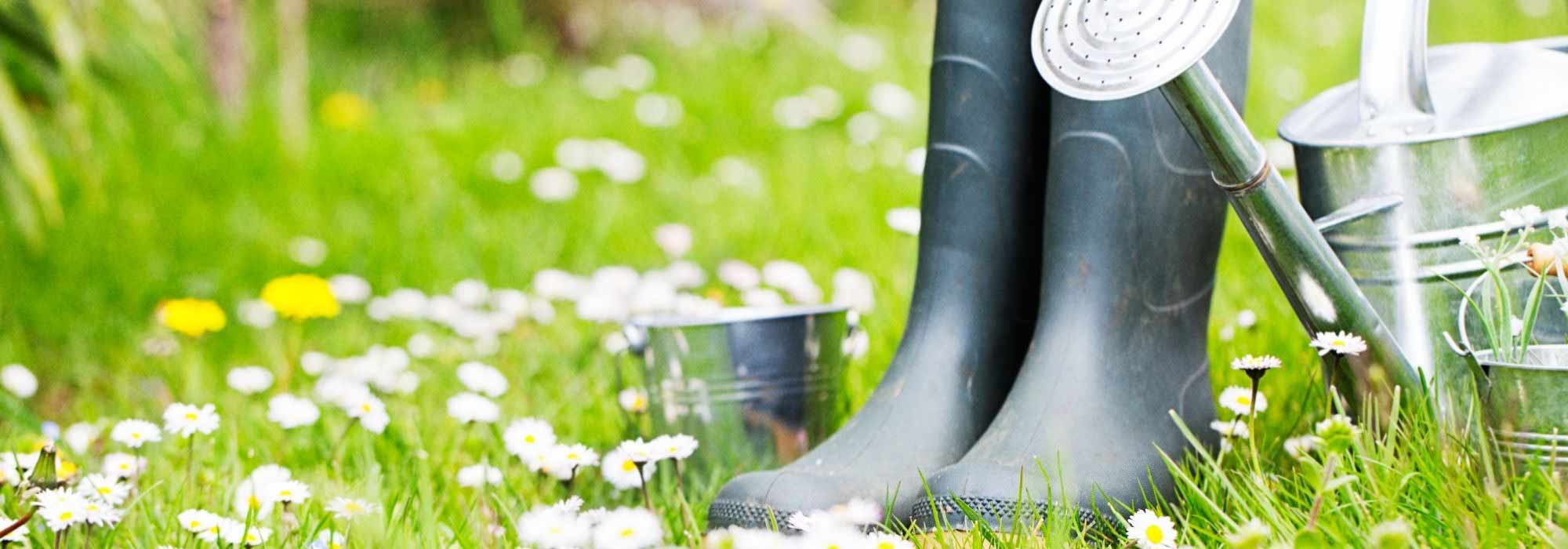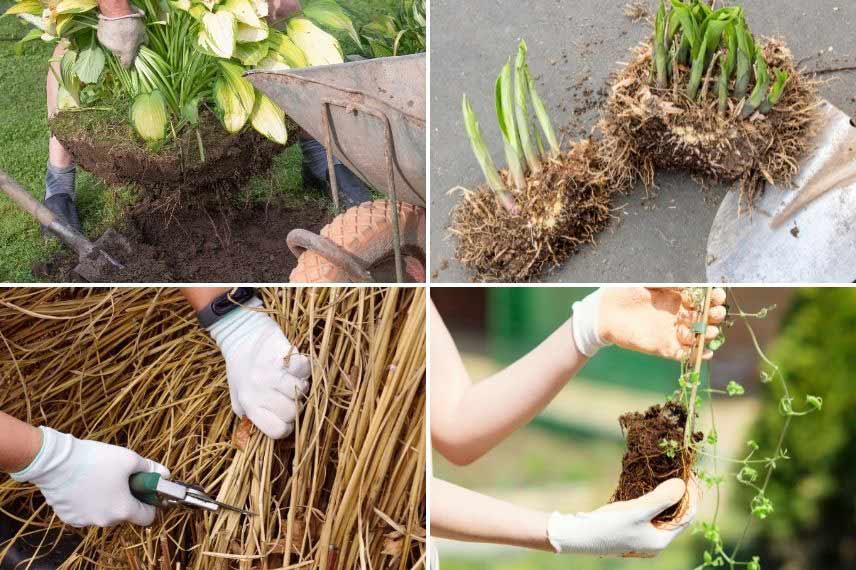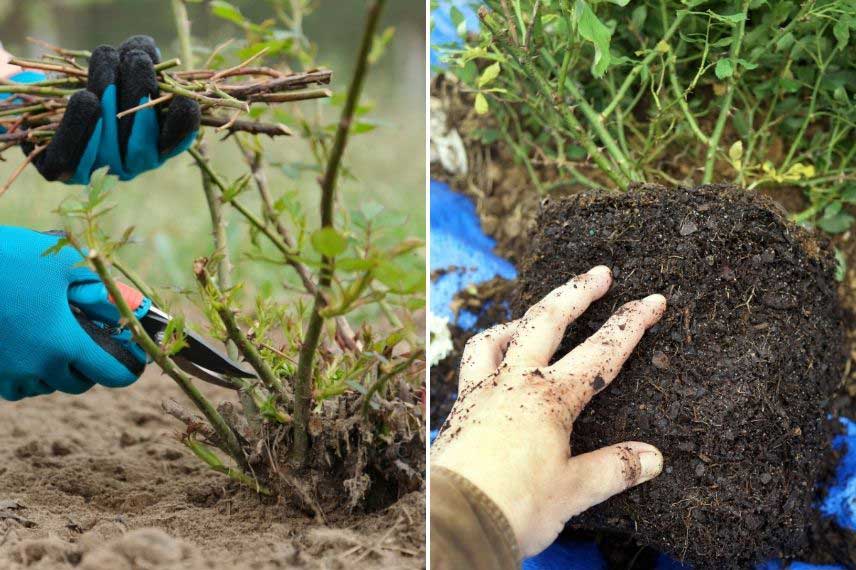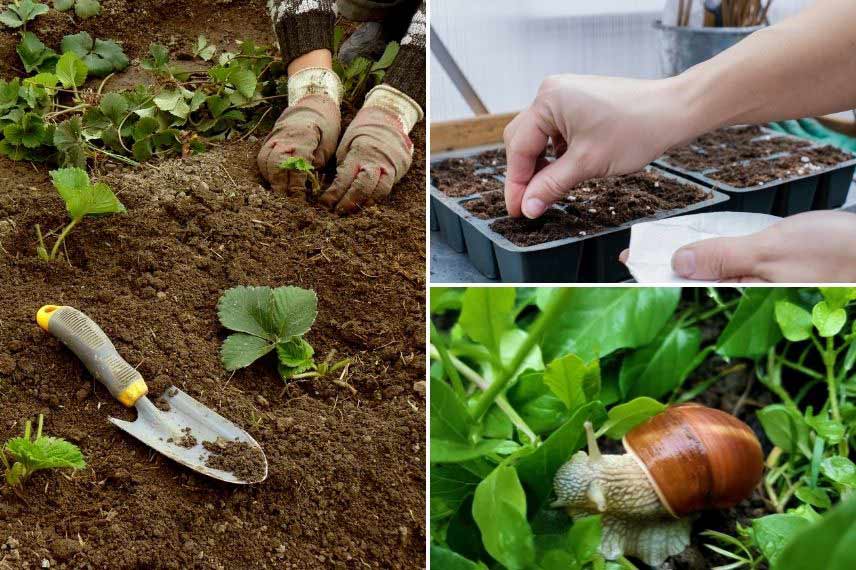
What to do in the garden in March?
to properly prepare for the arrival of spring
Contents
In March, the garden awakens from winter, and by the end of the month, we will officially be in spring. In the flower beds and on the balcony, the number of flowerings is increasing. However, let’s remain cautious, as March is still a winter month, with frosts that can still occur, except for those fortunate enough in the South or near the coast. Even though the desire to turn the page is strong, be a little more patient and take advantage of the mild weather to plan your plantings, both in the ornamental garden and in the vegetable patch!
Nevertheless, numerous gardening tasks await you this March, and your weekends promise to be quite busy! Pruning, planting, sowing, dividing, cleaning… What to do in the garden in March? Here’s an overview!
On the side of trees, bushes, and fruit plants
During autumn and winter, you may have started planting but might not have put everything in the ground that you intended. Don’t panic; there’s still time to do so. Get out your pruning shears, hedge trimmers, and rakes; the garden needs a spring clean!
Ornamental Trees and Conifers
- Continue planting trees and conifers outside of frost periods. You can still take advantage of bare-root specimens and, of course, plant container-grown ones.
- Inspect your trees for dead, diseased, broken, or damaged branches that you will remove using sharp and clean pruning tools, as well as any suckers and shoots. Also, look for any caterpillar nests to remove.
- Maintenance pruning of trees is done in early spring, in March and April, before the buds appear. Do not cut more than one-third of the length of each branch and 20% of the total canopy of the specimens. Birch, maple, and lime trees should be pruned in autumn, after leaf fall. Mimosas should be pruned as soon as they have finished flowering.
Fruit Trees and Berries
In March, the orchard enters the pruning season: act now for a bountiful promise of fruit!
- Plant fruit trees and berries such as raspberries, blackcurrants, redcurrants, or kiwis… You can still plant bare-root specimens for a few more weeks and, of course, also plant container-grown fruit trees.
- Prune apricot trees, peach trees, pome fruit trees (apple, pear, etc.), fig trees, olive trees, hazelnuts, blackcurrants, redcurrants, and blueberries.
- Prune and train raspberries, kiwis, vines, and blackberries. For these trained specimens, tie the shoots as they develop.
- Prune citrus trees following Alexandra’s advice.
- Add well-matured compost or a specific fertiliser by surface scratching at the base of the trees, taking care not to damage the roots.
Shrubs
- Finish planting deciduous shrubs as bare-root specimens. Next month, it will be too late, and you will need to plant container-grown plants.
- Replace any dying or dead shrubs.
- This March, pruning is carried out on a wide variety of shrubs, except for those that flower in spring, which should be pruned after flowering, and for evergreen hedge plants, which should be pruned in autumn. This pruning is essential for a beautiful summer flowering. You can prune: Buddleia, Cotoneaster, European spindle, Spanish broom, smoke tree, heather, ornamental apple, bush cinquefoil, rosemary, broom, Berberis, Callicarpa, dogwoods, St. John’s wort, holly, bay laurel, willows, viburnums, hibiscus (Althea), tamarisk, Lagerstroemia, oleanders, etc.
- Prune shrubs that have finished flowering such as camellias and Chimonanthus praecox as soon as they have finished flowering.
Hedges
- Finish planting hedge shrubs as bare-root specimens: establish new hedges, preferably free and diverse hedges to promote biodiversity and reduce maintenance later on. And consider fruit hedges!
- Prune the hedges. To make the task easier and guide you, use a taut line at the desired height: this will help you maintain a straight cut. Shred the pruning waste to create mulch that will benefit your shrubs.
- Spread a specific fertiliser at the base of the hedges.

Planting shrubs and pruning in March
→ Also read Sophie’s good advice in What to plant in spring?
Perennials, grasses, bulbs and climbing plants
Perennial Plants
- Plant perennial plants, divide clumps. For the care of perennial plants, Virginie guides you in her dedicated article.
- Take cuttings from the mother plants you wish to propagate. Then place them under a greenhouse or mini-greenhouse. Follow Eva’s advice for this.
Grasses
- Cut the culms of grasses and proceed with their cleaning. For this, feel free to follow Michael’s advice.
- Fescues should not be cut at the base, but cleaned by removing dry parts and faded spikes by hand or with a rake.
- Divide clumps of grasses.

Division of perennials, cleaning of grasses, and planting of climbing plants
Bulbs
- Plant summer bulbs and autumn bulbs.
- Divide the faded snowdrops.
Climbing Plants
To limit their bulk, ensure harmonious growth, and promote flowering, climbing plants benefit from annual pruning.
- Plant climbing plants in the ground or in pots, providing support for those that need it. Secure the stems with sturdy ties, without tightening them too much.
- Prune Wisterias: in March-April, after the last true frosts, when the buds have appeared, cut the year’s stems back to two or three buds and remove weak branches. Training pruning will take place in August.
- Prune Trumpet Creepers: cut back the branches by three-quarters of their length at the end of March, so that the plants thicken and spread the stems evenly on the supports.
- Prune summer clematis by cutting all the stems from the previous year back to 20 cm from the ground.
- Prune Honeysuckle, Winter Jasmine after flowering, or Trachelospermum (Star Jasmine) to balance the branching.
- Clean climbing ivy. Trim back overly long shoots.
Roses
Pruning and Maintenance of Roses
- Outside of frost periods, prune bush roses and climbing roses that repeat flower. Always prune above an eye pointing outwards and remove old branches to aerate the centre of the clumps.
- Once pruning is complete, spread a special organic fertiliser for roses and lightly rake the soil.
Planting Roses
- These are the last weeks for planting roses with bare roots. Remember to shorten the branches if necessary and soak the roots.
- Plant all container roses.
- Apply mulch at the base.
 Pruning and planting of roses[/caption>
Pruning and planting of roses[/caption>
Annuals and potted plants
Annuals
- Sow annuals under cover.
- In open ground, start sowing Sweet Peas. In sheltered, sunny borders, sow seeds of Delphiniums, Love-in-a-Mist, Clarkias, or poppies.
Potted Plants
- Remember to care for your potted plants, containers, or window boxes like Primroses and Pansies by removing dead or dried leaves.
- Start pruning, cleaning, and repotting wintered plants (Pelargoniums, Fuchsias…).
- Place potted plants or containers near the house or on the balcony. Perennials, roses, some bushes, or small trees tolerate pot cultivation and will provide beautiful flowering.
- Make a fertiliser application to plants that remain in pots all year round. Repot them or add a supplementary layer of substrate by surfacing. Rake this substrate on the surface to break it up and aerate it. In all cases, be careful not to damage the roots and then water thoroughly.
 Sow the annuals, care for spring window boxes, repot the potted plants for the terrace
Sow the annuals, care for spring window boxes, repot the potted plants for the terrace
→ Find Jean-Christophe’s tips for cultivating, maintaining, and caring for potted plants
In the vegetable garden
In March, the first sowing and planting begin in the vegetable garden. However, due to the risk of spring frosts, only sow and plant vegetables that are not sensitive to cold snaps. And beware of the snails and slugs that reappear!
Which vegetables to plant?
- Make the first plantings in the vegetable garden: garlic, shallots, white onions, or strawberries.
- Divide and plant artichokes.
- Buy and sprout seed potatoes. Plant the sprouted potatoes with the sprouts facing up, at a depth of 15 cm.
- Ventilate the frames and tunnels during the day in mild weather.
- Add a base fertiliser to the vegetable garden.
- Chop and incorporate green manures.
- Divide aromatic plants such as chives, tarragon, mint, or rhubarb.
Which vegetables to sow?
- Take stock of your vegetable seeds and prepare your orders. Before setting up your vegetable crops, take the time to think about the organisation of the garden and their layout. Plants sensitive to the same diseases or pests should not be sown next to each other. For crucifers (turnips, cabbages, radishes) whose young plants are vulnerable to flea beetles, separate them with rows of peas or broad beans or plants from other families, such as alliums (onions, shallots, garlic, or leeks).
- Under glass or in frames, carry out the first sowing of vegetables: aubergines, tomatoes, celeriac, celery, summer cabbages, summer cauliflowers, spring lettuces, melons, radishes, chillies, peppers, etc.
- Sow in place, possibly under a tunnel, the vegetables such as: beetroot, broad beans, salsify, chervil, radishes, curly chicories for summer, butterhead lettuces, spring Chinese cabbages, watercress, spinach, sorrel, parsley, peas, and leeks to be transplanted at the end of June for the autumn-winter harvest.

Planting strawberries and sowing vegetables, while being mindful of the first snails and slugs
→ Find our March vegetable garden calendar
Lawn and various works
Lawn
- Start the first mowings by setting the cut quite high. This is also perhaps the time to consider differentiated maintenance, allowing the grass to grow and only mowing pretty paths that will wind through the tall herbs and flowers. You will mow at the end of summer or early autumn. Limited maintenance while promoting biodiversity!
- To regenerate an old lawn, use an aerator and a scarifier.
- Prepare the ground for a new lawn, which you can sow in the south.
→ Learn more in How to care for your lawn in spring?
In the ornamental garden
- Weed in and around the flower beds.
- In regions with a mild climate, where severe frosts are rare, remove the protections placed in early winter on the most fragile plants: Citrus trees, Fuchsias, Bananas, etc. Keep an eye on the weather and be prepared to replace them if frosts are forecasted.
In the pond
- Cut the faded foliage and clean the bank and pond plants.
- Repot the pond plants that need it.
- Depending on the region, start feeding the fish again.
- Spring is the breeding season for frogs and toads: if gelatinous clumps of spawn appear, protect them and avoid intervening in these areas.
→ Gwenaëlle tells you all about maintaining a garden pond in spring.

Preparing new lawns, weeding and cleaning ponds are part of the tasks for the month of March
And everything else…
- Turn the compost to aerate it before filling it with grass clippings and pruning waste.
- Clean the paths, paving and benches.
- If not done yet, install birdhouses to encourage upcoming nesting.
- Subscribe!
- Contents
































Comments